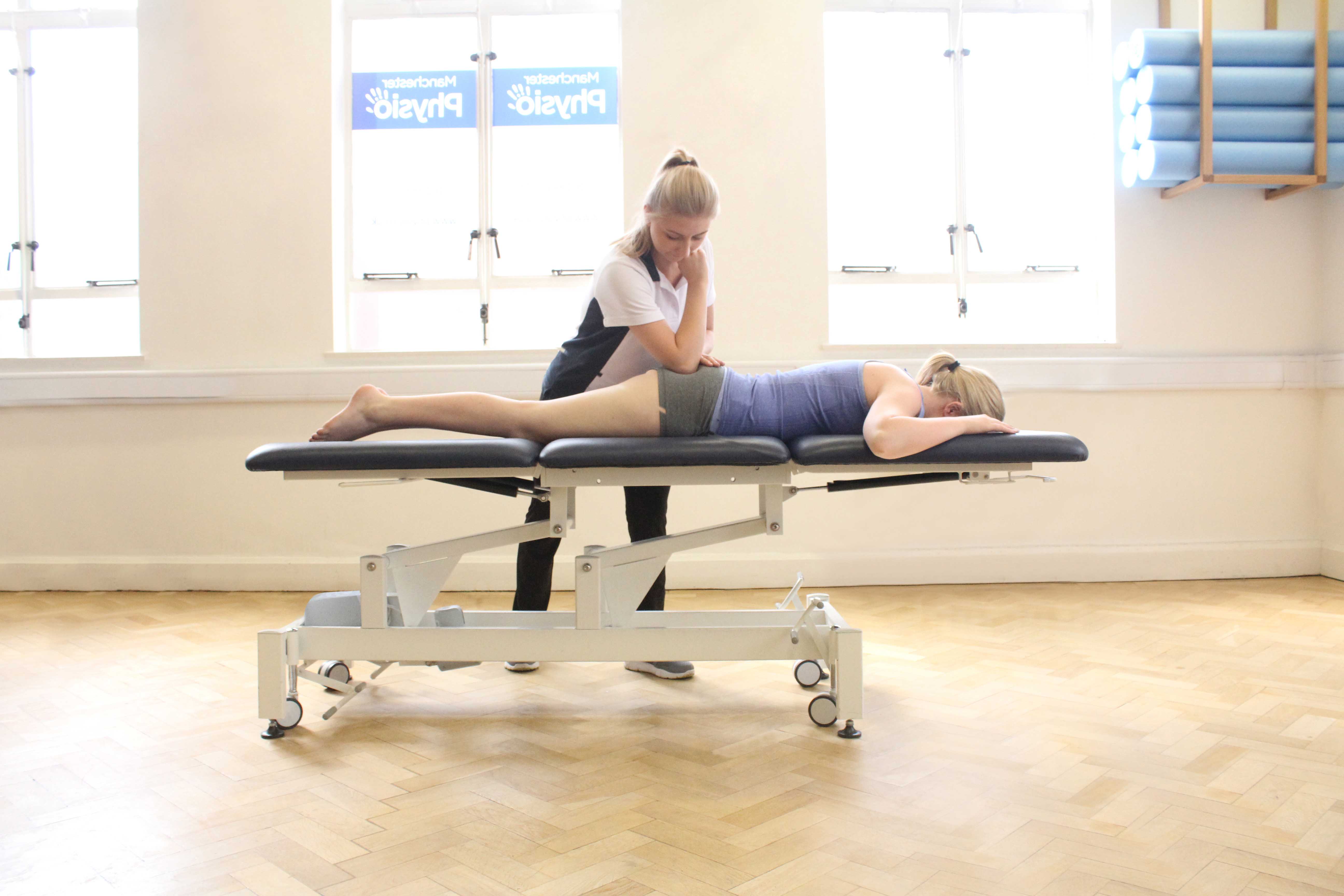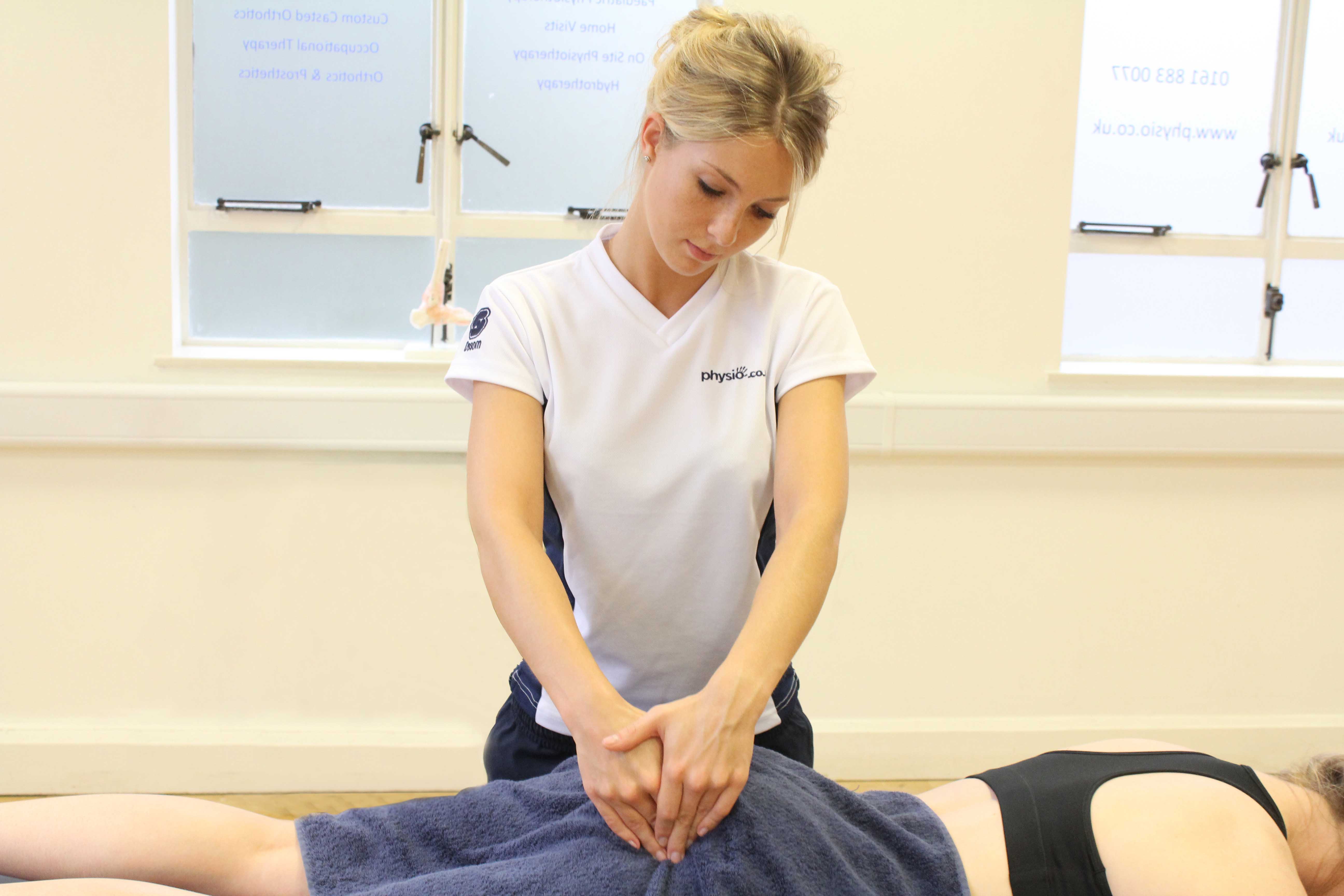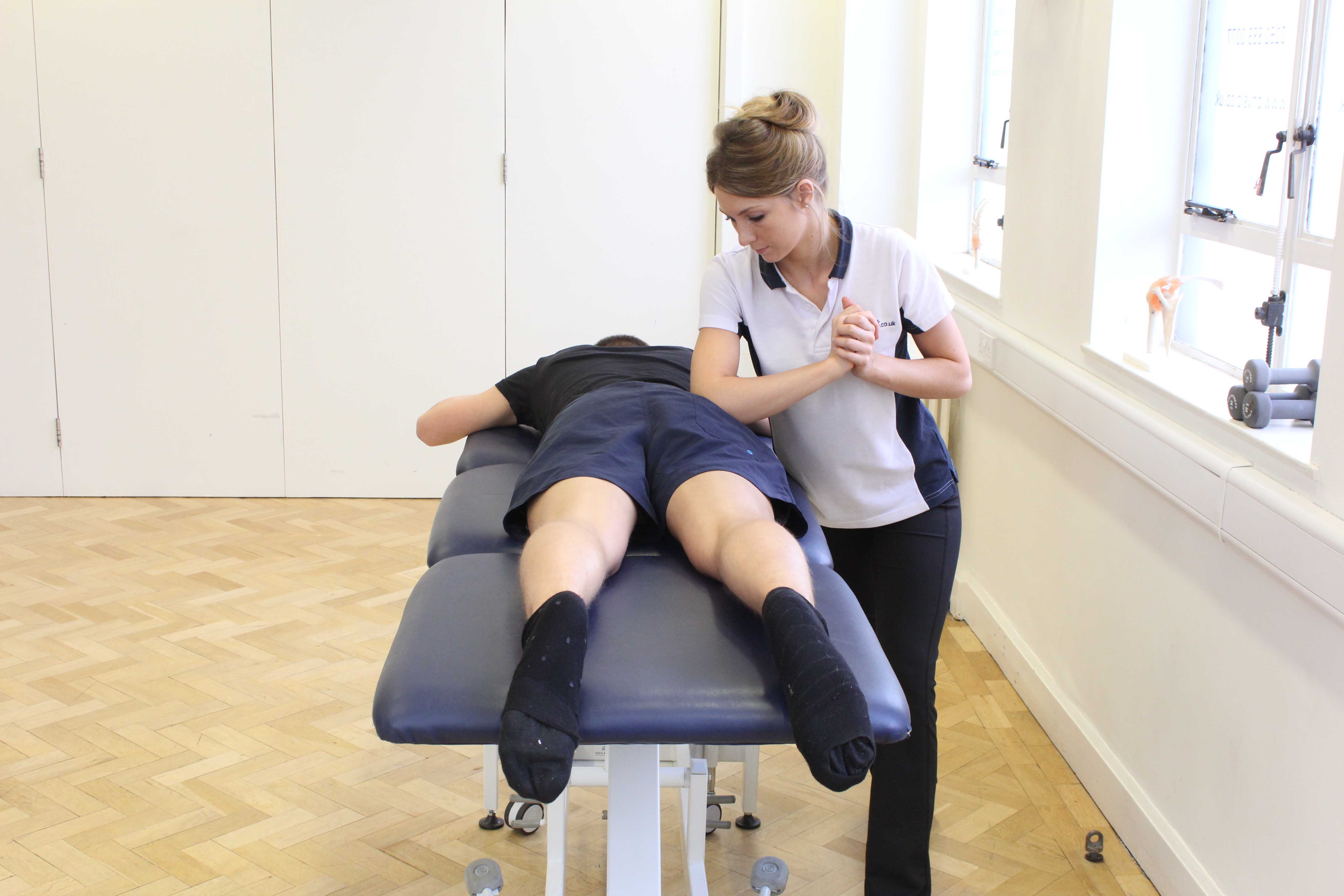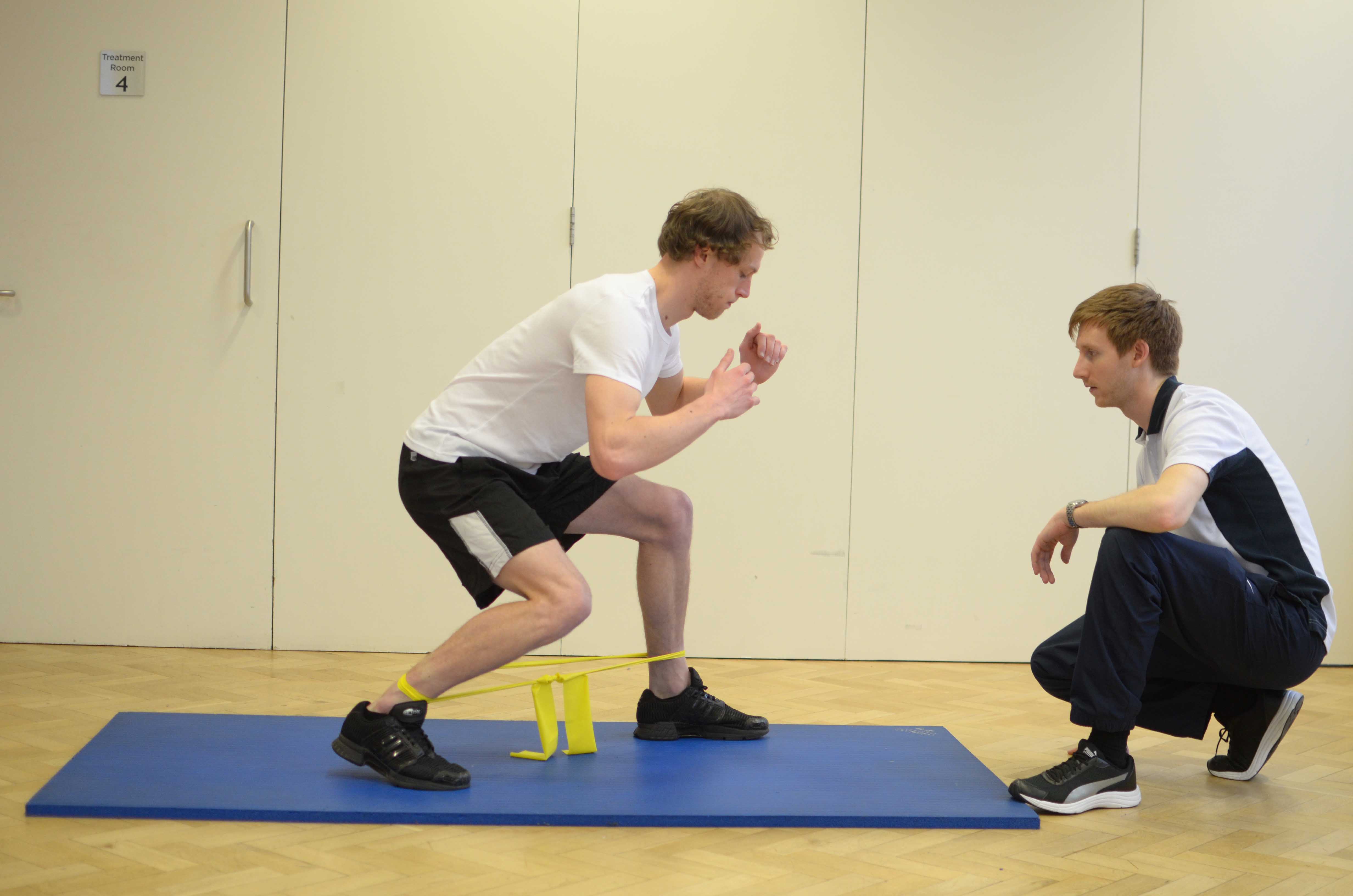What is ischiogluteal bursitis?
A bursa is a fluid-filled sac, which reduces friction and, therefore, irritation within the tissues of the body by allowing them to easily slide over one another. Ischiogluteal bursitis is the inflammation of one of these sacs. The ischiogluteal bursae are located beneath the origin of the hamstring muscles, just below the crease of your buttock. Physiotherapy is an effective treatment to reduce symptoms of ischiogluteal bursitis.
 Above: Deep tissue massage of the gluteus maximus muscle by specialist therapist
Above: Deep tissue massage of the gluteus maximus muscle by specialist therapistHow does ischiogluteal bursitis happen?
Ischiogluteal bursitis occurs when the ischiogluteal bursa is damaged or irritated. Irritation can be caused by a direct blow to the bursa such as falling on a hard surface. This can damage blood vessels within the ischiogluteal bursa and cause an inflammatory response, resulting in swelling of the bursa and, therefore, bursitis.
Ischiogluteal bursitis can also be caused by repeated minor trauma. This can occur with sitting for a prolonged period on a hard surface. This type of ischiogluteal bursitis is commonly referred as ‘weaver’s bottom’. Sitting for a prolonged period can increase wear and tear on the bursa causing microtrauma. Over time, this can result in bursal thickening, inflammation and bursitis. This can also occur with tight muscles around the bursa. The ischiogluteal bursa works to allow the gluteal and hamstring muscles to slide smoothly and without friction over the nearby bone (ischial tuberosity). When these muscles are excessively tight, they place increased pressure and friction on the bursa, resulting in bursitis.
 Above: Deep tissue massage of the gluteus maximus muscle by specialist therapist
Above: Deep tissue massage of the gluteus maximus muscle by specialist therapistWhat are the symptoms of ischiogluteal bursitis?
Ischiogluteal bursitis generally causes a dull ache in the buttock that may become sharp with movements of the hip joint. The pain may radiate down the outside of the thigh and is often aggravated by activities such as walking, running, or stair climbing. Similarly, it is also often aggravated by sitting, which compresses the bursa against the adjacent bone. Other symptoms may include:
What should I do if I have ischiogluteal bursitis?
If you have ischiogluteal bursitis, it is advised you avoid activities that aggravate your pain and seek the assistance of a sports medicine professional to establish its cause. If the cause of the bursitis is not addressed, the pain may dissipate when you rest, only to return as soon as you recommence activity.
 Above: Deep tissue massage of the piriformis and gluteus maximus muscle by specialist therapist
Above: Deep tissue massage of the piriformis and gluteus maximus muscle by specialist therapistPhysiotherapy treatment for ischiogluteal bursitis.
The assistance of a sports medicine professional is important in the treatment of ischiogluteal bursitis. They will be able to confirm your diagnosis and use a number of treatment techniques to reduce your pain. In some situations, this may involve draining the bursa, using anti-inflammatory medications or injecting a small quantity of an anti-inflammatory directly into the bursa to stimulate healing. More importantly, the sports medicine professional will be able to determine the cause of irritation on the bursa. Addressing this primary problem as your pain settles will help prevent a re-occurrence when you return to activity.
Physiotherapy options may include:
What shouldn’t I do if I have ischiogluteal bursitis?
If you have ischiogluteal bursitis, you should not continue with activities which aggravate your pain or make it worse. These will increase friction on the bursa, further irritating it, and possibly delay your recovery.
 Above: Strengthening exercises for the gluteus muscles supervised by a therapist
Above: Strengthening exercises for the gluteus muscles supervised by a therapistCould there be any long-term effects from ischiogluteal bursitis?
Unless the cause of irritation on the ischiogluteal bursa is accurately identified and addressed, ischiogluteal bursitis will not get better on its own. Your pain may disappear with a period of lay-off or treatment; however, with recommencement of activity, excessive friction on the bursa continues resulting in inflammation and the re-occurrence of your pain.
To arrange a physiotherapy assessment call Physio.co.uk on 0330 088 7800 or book online.

 0330 088 7800
0330 088 7800

































